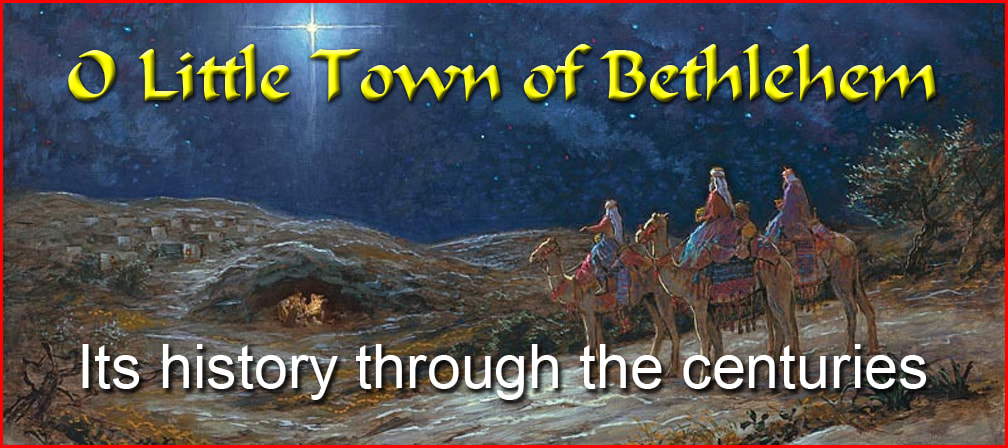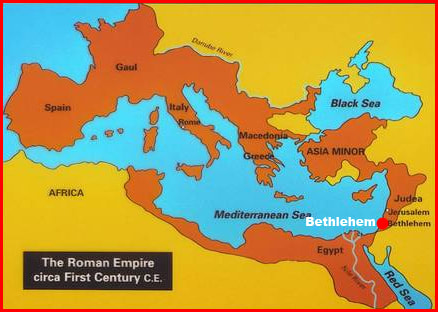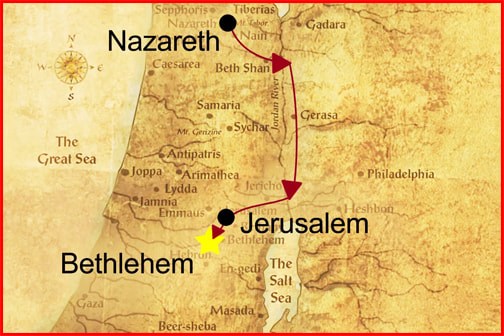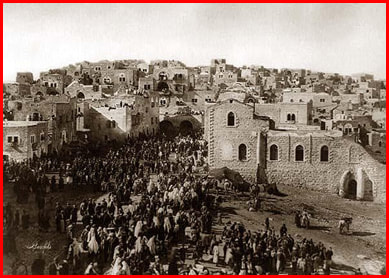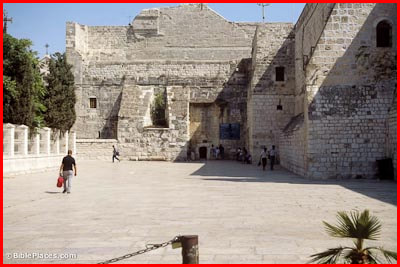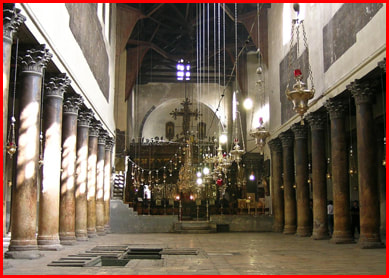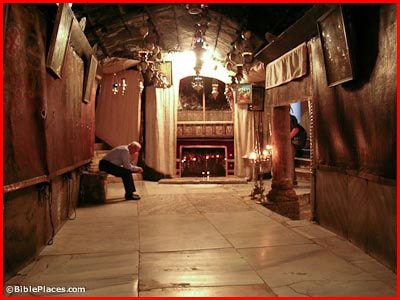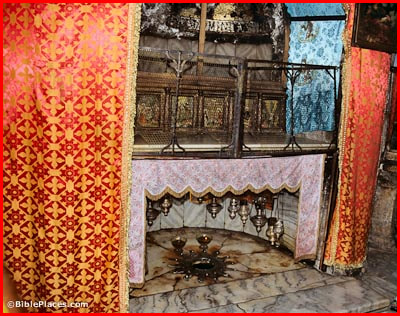| Devotion to Our Lady |
|
- Homepage
-
Daily Thoughts
- 2023 October Daily Thoughts
- Daily Thoughts Lent 2020
- Daily Thoughts for Advent 2019
- Daily Thoughts for October 2019
- Daily Thoughts for September 2019
- Daily Thoughts for August 2019
- Daily Thoughts for July
- Daily Thoughts for June
- Daily Thoughts for Easter 2019
- Daily Thoughts for Lent 2019
- Daily Thoughts for Christmas
- Daily Thoughts Easter 2022
- Sacred Heart
- Holy Ghost
-
Spiritual Life
- Holy Mass Explained
- First Friday Devotions
- First Saturday Devotions
- The Mercy of God
- Vocations
- The Path Everyone Must Walk >
- Gift of Failure
- Halloween or Hell-O-Ween?
- Ignatian Spiritual Exercises >
- Meditation is Soul-Saving
- Spiritual Communion
- Miraculous Medal
- Enrollment in Miraculous Medal
- St. Benedict Medal
- Holy Water
- Advice on Prayer
- Your Daily Mary
-
Prayers
- September Devotions
- Seven Sorrows of Our Lady
-
Novenas
>
- NV-Help of Christians
- NV-Nativity of Our Lady
- NV-Seven Sorrows
- NV- Sorrowful Heart
- NV-Pope St Pius X
- NV-La Salette
- NV-St Michael Archangel
- NV-Immaculate Heart
- NV-Assumption
- NV-Novena for Fathers
- NV-Novena for Your Mother
- NV-St Raphael Archangel
- NV-Souls in Purgatory
- NV-All Saints Day
- NV-Christ the King
- NV-Divine Motherhood
- NV-Guardian Angels
- NV-Rosary
- NV-Mirac Med
- NV- Imm Conc
- NV - Guadalupe
- NV - Nativity of Jesus
- NV-Epiphany
- NV-OL Good Success
- NV-Lourdes
- NV-St Patrick
- NV-St Joseph
- NV-Annunciation
- NV-St Louis de Montfort
- NV-OL Good Counsel
- NV-Last Supper
- NV-Passion
- NV-Pentecost
- NV-Ascension
- NV-Sacred Heart
- NV-Sacred Heart & Perpetual Help
- NV-Corpus Christi
- NV-OL of Perpetual Help
- NV-Queenship BVM
- NV-OL of Mount Carmel
- NV-St Mary Magdalen
- NV- Im Hrt
- August Devotions to IHM
- Immaculate Heart of Mary
- Litany of Dependence
- Prayers to St Mary Magdalen
- Prayers in Times of Sickness Disease & Danger
- Holy Souls in Purgatory
- Meditations on the Litany of Our Lady
- Special Feast Days
- Prayers to Mary (Mon-Sun)
- Litanies to Our Lady >
- Various & Special Needs
- Our Lady of the Rosary
- Our Lady of Mt. Carmel
- Our Lady of Perpetual Help
- Our Lady of Guadalupe
- Other titles of Our Lady
-
Rosary
- Downloads
- Consecration
- Easter Season
-
Holy Week
- Last Seven Words of Jesus >
- Characters of Passion >
- The Last Days of Christ
- Before Palm Sunday
- Palm Sunday
- Monday in Holy Week
- Tuesday in Holy Week
- Wednesday in Holy Week
- Holy Thursday (Last Supper)
- Holy Thursday (Agony & Arrest)
- Night Vigil with Christ
- Good Friday (Pilate & Herod)
- Good Friday (Way of Cross & Crucifixion)
- Saturday in Holy Week
-
Lent
- Ideas for Lent
- Daily Lenten Planner
- Daily Lenten Liturgy
- From Cold to Hot
- Lent with Aquinas
- Lent with Dom Gueranger
- Virtues for Lent
- History of Penance
- How Expensive is Sin?
- Confession of Sins
- Letter to Friends of the Cross
- Sermons for Lent
- Stations of the Cross >
- Lenten Prayers
- 7 Penitential Psalms
- Lenten Psalms SUN
- Lenten Psalms MON
- Lenten Psalms TUE
- Lenten Psalms WED
- Lenten Psalms THU
- Lenten Psalms FRI
- Lenten Psalms SAT
- Lenten Laughs
- Septuagesima
-
Christmas
- Epiphany Explained
- Suggestions for Christmas
- Food For Thought
- Christmas with Aquinas
- Christmas with Dom Gueranger
- Christmas Prayers
- Candles & Candlemas
- Christmas Sermons
- Christmas Prayers SUN
- Christmas Prayers MON
- Christmas Prayers TUE
- Christmas Prayers WED
- Christmas Prayers THU
- Christmas Prayers FRI
- Christmas Prayers SAT
- Twelve Days of Christmas >
-
Advent Journey
- Purgatory
- Christ the King
- Legion of Mary
- Scapular
-
Saints
-
Martyrs for the Faith
>
- Your Daily Martyr >
- All 365 Days of Martyrs
- Cristeros
- St Valentine & Valentine's Day
- Martyrs--Thomas Becket
- Martyrs--John the Apostle
- Holy Machabees
- Age of Martyrdom
- Carmelites of Compiegne
- Martyrs--Peter & Paul
- Martyrs--John the Baptist
- Martyrs--Andrew
- Martyrs--James the Great
- Martyrs--North American
- Martyrs--Seven Holy Sleepers
- Martyrs--Afra
- School of Martyrdom
- Martyrs--Christina
- Desert Saints >
- Saints for Sinners >
- Saints of Mary >
- History of All Saints Day
-
Martyrs for the Faith
>
- Precious Blood
- Synod 2023
-
Catechism
- Catechism Lesson 1
- Catechism Lesson 2
- Catechism Lesson 3
- Catechism Lesson 4
- Catechism Lesson 5
- Catechism Lesson 6
- Catechism Lesson 7
- Catechism Lesson 8
- Catechism Lesson 9
- Catechism Lesson 10
- Catechism Lesson 11
- Catechism Lesson 12
- Catechism Lesson 13
- Catechism Lesson 14
- Catechism Lesson 15
- Catechism Lesson 16
- Catechism Lesson 17
- Catechism Lesson 18
- Catechism Lesson 19
- Catechism Lesson 20
- Catechism Lesson 21
- Catechism Lesson 22
- Bible Study
-
Calendar
- Miracles
- Apparitions
- Shrines
- Prophecies
- Angels Homepage
- Hell
-
Church Crisis
- Conspiracy Theories
- Amazon Synod 2019 >
- Liberalism & Modernism
- Modernism--Encyclical Pascendi
- Modernism & Children
- Modernism--Documents
- The Francis Pages
- Church Enemies on Francis
- Francis Quotes
- Amoris Laetitia Critique
- Danger of Ignorance (Pius X)
- Restore all In Christ (Pius X)
- Catholic Action (Pius X)
- Another TITANIC Disaster?
- The "Errors of Russia"
- CRISIS PRAYERS
- Election Novena 2024
- The Anger Room
- War Zone
- Life of Mary
- Spiritual Gym
- Stupidity
- Coronavirus and Catholicism
- History & Facts
- Books
- Catholic Family
- Children
- Daily Quiz
-
Novena Church & Pope
- Day 01 Church-Pope Novena
- Day 02 Church-Pope Novena
- Day 03 Church-Pope Novena
- Day 04 Church-Pope Novena
- Day 05 Church-Pope Novena
- Day 06 Church-Pope Novena
- Day 07 Church-Pope Novena
- Day 08 Church-Pope Novena
- Day 09 Church-Pope Novena
- Day 10 Church-Pope Novena
- Day 11 Church-Pope Novena
- Day 12 Church-Pope Novena
- Day 13 Church-Pope Novena
- Day 14 Church-Pope Novena
- Day 15 Church-Pope Novena
- Day 16 Church-Pope Novena
- Day 17 Church-Pope Novena
- Day 18 Church-Pope Novena
- Day 19 Church-Pope Novena
- Day 20 Church-Pope Novena
- Day 21 Church-Pope Novena
- Day 22 Church-Pope Novena
- Day 23 Church-Pope Novena
- Day 24 Church-Pope Novena
- Day 25 Church-Pope Novena
- Day 26 Church-Pope Novena
- Day 27 Church-Pope Novena
- Day 28 Church-Pope Novena
- Day 29 Church-Pope Novena
- Day 30 Church-Pope Novena
- Day 31 Church-Pope Novena
- Day 32 Church-Pope Novena
- Day 33 Church-Pope Novena
- Day 34 Church-Pope Novena
- Day 35 Church-Pope Novena
- Day 36 Church-Pope Novena
- Day 37 Church-Pope Novena
- Day 38 Church-Pope Novena
- Day 39 Church-Pope Novena
- Day 40 Church-Pope Novena
- Day 41 Church-Pope Novena
- Day 42 Church-Pope Novena
- Day 43 Church-Pope Novena
- Day 44 Church-Pope Novena
- Day 45 Church-Pope Novena
- Day 46 Church-Pope Novena
- Day 47 Church-Pope Novena
- Day 48 Church-Pope Novena
- Day 49 Church-Pope Novena
- Day 50 Church-Pope Novena
- Day 51 Church-Pope Novena
- Day 52 Church-Pope Novena
- Day 53 Church-Pope Novena
- Day 54 Church-Pope Novena
- Penance Novena
- Daily WeAtheR Forecast
TO VISIT A SHRINE
click on the shrine you would like to view
| Bethlehem | Nazareth | Lanciano | Lourdes | La Salette | Fatima | Guadalupe | Walsingham | Mount Carmel |
| Our Lady of Perpetual Help | St. Patrick's Purgatory |
click on the shrine you would like to view
| Bethlehem | Nazareth | Lanciano | Lourdes | La Salette | Fatima | Guadalupe | Walsingham | Mount Carmel |
| Our Lady of Perpetual Help | St. Patrick's Purgatory |
THE SHRINE AND HISTORY OF BETHLEHEM
This page will be constructed throughout the day (December 24th)
Please keep cheking back for the latest additions to the page
Please keep cheking back for the latest additions to the page
|
BELOW: Looking down upon Bethlehem from the North.
This aerial photograph shows the main road to Bethlehem from the north (Jerusalem). The modern city stretches out from the historic center in all directions. Today Bethlehem is controlled by the Palestinian Authority and has a population of about 22,000 not including the suburbs of Beit Jala and Beit Sahour. BELOW: The “little town” of Bethlehem is significant to three major world religions: Judaism, Christianity, and Islam. For Judaism, it marks the birthplace of King David. Christians recognize it as the birthplace of Jesus. Since 637 C.E., when the Mosque of Omar was built, it has been a place of Muslim veneration and worship. Today Bethlehem is a small city with a population of around 30,000. The community is majority Muslim, with a large but dwindling Palestinian Christian population. Modern control of the city has been a game of political football. After World War I, the British seized control of the city from the Ottoman Empire. After the 1948 Arab-Israeli War, Jordan annexed the city, and in the 1967 Six-Day War, Israel took control. Since 1995, the Palestinian Authority has administered Bethlehem.
BELOW: Bethlehem has been a site of Christian pilgrimage for the last 1,700 years. The photograph below was taken aroudn 1890 and show pilgrims entering Bethlehem. The pilgrimage road from Jerusalem to Bethlehem connects the Damascus Gate in East Jerusalem to the historical entrance of Bethlehem, near the Church of the Nativity, and ends in Manger Square. During Christmas ceremonies every year, thousands of pilgrims from around the world congregate in Bethlehem to celebrate the birth of Jesus. The journey on foot, following the route celebrated as the path followed by Joseph and Mary, takes about two hours.
BELOW: The exterior of the Church of the Nativity in Bethlehem. The entrance to the famous church in Bethlehem is remarkably unimpressive. The large courtyard is perfect for priests, pilgrims or tourists, but most noticeable are the vendors. Palestinian police now patrol the area. Buses no longer are allowed to enter the square, but instead are directed to a large parking structure.
BELOW: The Interior of the Church of the Nativity, Bethlehem, was constructed between 327–339 AD. The Church of the Nativity was commissioned and built by the Roman emperor Constantine and his mother Helena in the fourth century C.E. According to Christian tradition, the church was built to mark the location thought to be the birthplace of Jesus. The church was destroyed by fire in the sixth century C.E. and rebuilt not long after by the emperor Justinian. Throughout the centuries, many additions have been added, including two bell towers that still stand today. Today the church and surrounding area is an UNESCO World Heritage Site due to its cultural and religious significance to both the Christian and Muslim faiths. It is the oldest Christian church in daily use today.
BELOW: The Birth Cave inside the Church of the Nativity.
Early tradition places the birth of Jesus in a cave. Scripture doesn’t mention the existence of a cave. Many houses in the area are built in front of caves. A cave could serve a household well by providing shelter for the animals or a place of storage. BELOW: The Altar inside the Cave of the Birth marks the Place of Birth of Jesus. According to tradition, Mary gave birth to Jesus at the place of where the star is located on the floor. The tradition that the birth was in a cave is one of the oldest Christian traditions. Justin Martyr mentions it in the mid-2nd century, as does the Protoevangelium of James (also 2nd century). Origen notes that the cave of Jesus’ birth was pointed out in his day and no doubt this was the same place where the Byzantine church was erected.
BELOW: A close-up of the star at the Altar of Birth. Mary gave birth to Jesus at the place of where the star is located on the floor.
|
DOWNLOAD POSTERS OF THE CHURCH OF THE NATIVITY
Here are two posters that will give you an in sight into the Church of the Nativity in Bethlehem
One poster is 11 inches by 17 inches (also known as LEGAL SIZE in the USA) The other poster is 8.5 inches by 11 inches (also know as LETTER SIZE in the USA) Just click on the links below.
A BRIEF OVERVIEW OF THE HISTORY OF BETHLEHEM
Bethlehem was mentioned around 1350 BC in the Tell al-Amarna letters, from the Egyptian governor of Palestine to the Pharaoh Amenhotep III. It was depicted as an important staging and rest stop for travelers from Syria and Palestine going to Egypt. The letters also signify that it was a border city of mid-Palestine and an outpost looking out towards the desert. The Philistines had a garrison stationed in Bethlehem because it was a strong strategic point. They entered the land of the Canaanites, mingled with its people and settled in the southern coasts between Jaffa and Gaza. The Philistines had achieved military supremacy over the greater part of the country around 1200 BC, and called it Palestine.
The narrative of the Old Testament mentions Bethlehem in the first book of the Bible when Jacob, son of Abraham, and his family were journeying to the city of Hebron passing by Bethlehem (Ephrata) (Genesis 35: 16-19). There, his wife Rachel died giving birth to Benjamin, and he buried her by the side of the Bethlehem Road where her tomb has been a shrine to this day: “And Rachel died, and was buried in the way to Ephrath, which is Bethlehem.” In that time, Bethlehem was a small, walled town erected on a hill in the northern part of the present town of Bethlehem. The name of Bethlehem (Ephrata) “the fruitful” itself suggests a pastoral and agricultural life. The tale of Ruth, the Moabite, and Boaz suggests an atmosphere of idyllic rusticity that is still obvious today (Ruth 2-4). Ruth’s grandson was King David of whose lineage Christ was born. A decree of Caesar Augustus, ordering the taking of a census in all the provinces of the Roman Empire, brought Mary and Joseph to Bethlehem, thus fulfilling the prophecy of Micah, spoken 750 years before: “And thou, Bethlehem Ephrata, art a little one among the thousands of Juda! Out of thee shall He come forth unto Me that is to be the Ruler in Israel! And His going forth is from the beginning, from the days of eternity” (Micheas 5:2). When Jesus was born in Bethlehem, Herod the Great was a vassal of Rome and, in 6 AD Palestine, was incorporated in the imperial province of Syria. Emperor Hadrian in 135 AD profaned the sanctity of the Grotto of the Nativity and turned it into a pagan shrine. From Hadrian’s time until the reign of Constantine, the population worshipped Adonis in the cave where the infant Jesus was born. Palestine, consequently, was officially pagan as was the whole Roman empire until 313, when Constantine proclaimed Christianity as the religion of the state. In the year 325, the Bishop of Jerusalem, St. Maccarius, took the opportunity of acquainting the Emperor Constantine with the neglected condition of the Holy Places in his diocese. Thus, the Emperor ordered the construction, at public expense, of monumental churches to commemorate the three principal events of Jesus’ life: Nativity, Crucifixion and Resurrection. One of these was a church enshrining the scene of the Nativity. Christian traditions were so clear and deeply rooted that there was no problem in locating the correct place. Among the trees, not far from the village, was a cave which the local people and their parents had known for generations to be the birthplace of Jesus Christ. The cave was made the center of a scheme for the church and work began the following year (326 AD). Toward the end of the 4th century, Bethlehem became a very important center of monastic life. In 384, St. Jerome arrived from Rome with a group of pilgrims. He came to Bethlehem to continue his work in the atmosphere of monastic life. He devoted himself to the tremendous task with which Pope St. Damasus had entrusted him, namely to review all old Latin translations of the Bible and produce a new version, the Vulgate, based on original Hebrew and Greek texts. Two Roman ladies of noble origin, St. Paula and her daughter Eustochium moved to Bethlehem in 386 to lead an ascetic life along with St. Jerome. They founded the earliest monastic community in Bethlehem which has lasted, with some interruption, to this day. Paula used her riches to build a hospice for pilgrims and two monasteries, one for St. Jerome and his followers, and the other for herself and the nuns. When the Roman empire was divided, in 395, into two empires, eastern and western, Palestine was attached to Byzantium, the eastern part. In the following years the life of the Latin-speaking communities of Bethlehem faded from view, eclipsed by the growth and more spectacular austerities of an eastern monasticism. As a result, the town of Bethlehem prospered and its population increased with the spread of churches, monasteries, and convents in Bethlehem itself, and the surrounding areas. In 527, Justinian became Emperor in Constantinople. Under his reign Palestine witnessed a time of prosperity and expansion for its churches and for monasticism. Afterwards, in 529, the Samaritans rebelled against the Byzantine state and overran the country, plundering and destroying as they went. Churches and monasteries, towns and villages were all pillaged or gutted by fire. The walls of Bethlehem and its main church were destroyed. The revolt was soon quelled. At the same time the church was rebuilt in a grand style. The town wall and the defenses of the monasteries were repaired. A few years later, in 614, the country was invaded by the Persians. According to an oral tradition, they did not cause any damage to the Church of the Nativity because they saw the pictures of the three Magi dressed as Persians, carrying gifts to Christ at his birth. Outside and above the roof of the narthex, the gable end overlooking the atrium was decorated with a mosaic scene of the birth of Christ with his mother holding the Child to her breast. In 637, soon after his entry into Jerusalem, the Muslim Caliph ‘Umar ibn al-Khattab visited Bethlehem. The relations between ‘Umar and the ecclesiastical authorities were friendly and a written agreement was granted to the Patriarch Sofronious. The tolerant policy was maintained by Umar’s successors till 1009. In that year a fanatic Caliph, al-Hakim, the one who had destroyed the Holy Sepulcher, declared a real persecution against Christians. However, Bethlehem was once more spared because al-Hakim wished to continue receiving the tribute Christians had been paying since Umar’s day. The conquest of Palestine by the Crusaders in the year 1099 began a new chapter in the history of Bethlehem. Within a short time the Franks took over from the local clergy and installed a community of Augustinian canons under a prior who conducted services in the Latin language. The Crusaders reconstructed the town and made it a fortified outpost. They remained for about two centuries during which the town of Bethlehem prospered. Some of them intermarried with the local people and settled down. The 12th century opened Bethlehem to European social and ecclesiastical influences to an unprecedented extent. From every country, pilgrims could now visit the Holy Places bringing with them offerings to the church and prosperity to the merchants whose shops were built in front of it. In 1100, the Crusader King Baldwin succeeded in having Pope Pascal II establish a bishopric in Bethlehem. In 1187, Saladin the Ayyubite captured Bethlehem. Although the Church of the Nativity was unharmed, the relations with the West were abruptly cut off, and the Latin Bishop and Canons were forced to leave. The life of the local people was seriously affected by the expulsion of the Latin community and the temporary interruption of the stream of western pilgrims on which the Bethlehemites primarily depended. However, because of two treaties, one signed by emperor Frederick II and Malek el-Kamel, sultan of Egypt, and the second by the king of Navarre and the Sultan of Damascus, Bethlehem was in Christian hands from 1229 to 1244. The Canons of St. Augustine could return to their convent and the Basilica was once more opened to the Christian world. In 1250, the Ayyubid Dynasty was replaced in Egypt by Circassian Mamlukes, and the accession of the fanatical Sultan Rukn ed-Din Beibars brought an end to the tradition of tolerance that helped safeguard the Holy places. In 1263, Beibars ordered the dismantling of the towers and walls of Bethlehem. The church itself was not damaged, which gave rise to a legend that a serpent bit the marbles and cracked them, so that the Sultan could not take them to Cairo, as he wished. However, the Christians were banished from Bethlehem. In the following century, western influences were reinforced; monks from the order of the Franciscan Friars Minor were established in Bethlehem in the old Augustinian priory, where they still reside. The Franciscan Fathers had acquired possession of the grotto in 1347 and also, the right to administer the Basilica and to care for its maintenance. The Franciscan Custos, Giovanni, obtained from the Sultan Qaita Bey consent to renovate the roof of the Church of the Nativity. A few years later European influences at Bethlehem were set back by the expulsion of the Catholic Latin clergy for the second time. With the Turkish occupation in 1517, the period of conflict between the Franciscans and the Greeks for the possession of the Sanctuaries began. Consequently, the Basilica passed from the Franciscans to the Greeks according to the favor enjoyed at the Sublime Porte (Ottoman Caliph) by the nation which supported the communities (Catholics or Orthodox). Under the Turkish regime the question of ownership and rights in the Holy Places took on an increasingly political and even international dimension. The first question in the dispute between France and Russia was concerned with the possession of the key to the main doors of the Basilica. The second was concerned with the mysterious removal, one night in the year 1847, of a silver star bearing a Latin inscription, which was put into a slab of marble beneath the altar of the Nativity. However, between the 17th and 18th centuries Bethlehem was on the verge of modern times. Long and continuous contact by the local people with travelers from Western Christendom had familiarized them with the manners and tastes of Western countries, and improved their economic condition. Palestine was under Egyptian rule for ten years beginning in 1831. However, during this period, robbery and violence were too common, and the murder of a favorite of Ibrahim Pasha in 1834, resulted in the destruction of the Moslem quarter of the town and the disarming of the whole population. By 1841 Bethlehem was again under Turkish rule. The result was unemployment, oppression, compulsory military service and heavy taxes imposed on the inhabitants. This oppressive situation forced the people of Bethlehem to emigrate abroad, especially to the Americas, to earn a living and improve their life-style. By the end of the 19th century, several European missionaries came to Bethlehem and built schools. The Turkish rule ended in 1917, and Palestine was placed under the British Mandate. At that time, the inhabitants of Bethlehem numbered about 8000. When the British withdrew from Palestine in 1948 the population of Bethlehem was 11,696. Wars between Arabs and Jews continued and the latter occupied most of Palestine and declared their state ‘Israel’. The town of Bethlehem remained unoccupied and towards the end of 1948, the union of the eastern part of Palestine and Trans-Jordan was declared under the name of the Hashemite Kingdom of Jordan. A second war between the Arabs and Israelis broke out in 1967, and the latter occupied the remainder of Palestine including Bethlehem. Bethlehem remained under the Israeli occupation until December 22, 1995 when the Palestinian Authority took over in compliance with the Oslo Accord of 1993. In September 1993 Israel and the PLO signed the Oslo Accord. Among its provisions, the accord called for a five-year interim period of Palestinian Autonomy in the West Bank and Gaza at the end of which the final status of the occupied territories will be decided. However, the implementation of the accord met setbacks resulting from the intransigence of the Israeli extremists. In 1950, Bethlehem and the surrounding villages were 86 percent Christian. But by 2016, the Christian population dipped to just 12. Across the West Bank, Christians now account for less than 2% of the population, though in the 1970s, Christians were 5% of the population. In Bethlehem, the traditional birthplace of Jesus, today there are just 11,000 Christians. According to the Palestinian Ministry of Tourism, 1.16 million foreigners visited the Church of the Nativity in 2013, the most recent year statistics were available. That same year, about 3.54 million tourists visited Israel. All tourists to Bethlehem arrive from Israel via one of 29 checkpoints that lead to the city and surrounding villages. One of the main complaints among residents is that many tourists come to Bethlehem just for a few hours, in order to visit the Church of the Nativity, and then immediately get back on the bus to return to Jerusalem, spending very little money in the city. | ||||||||||||||||
Web Hosting by Just Host
